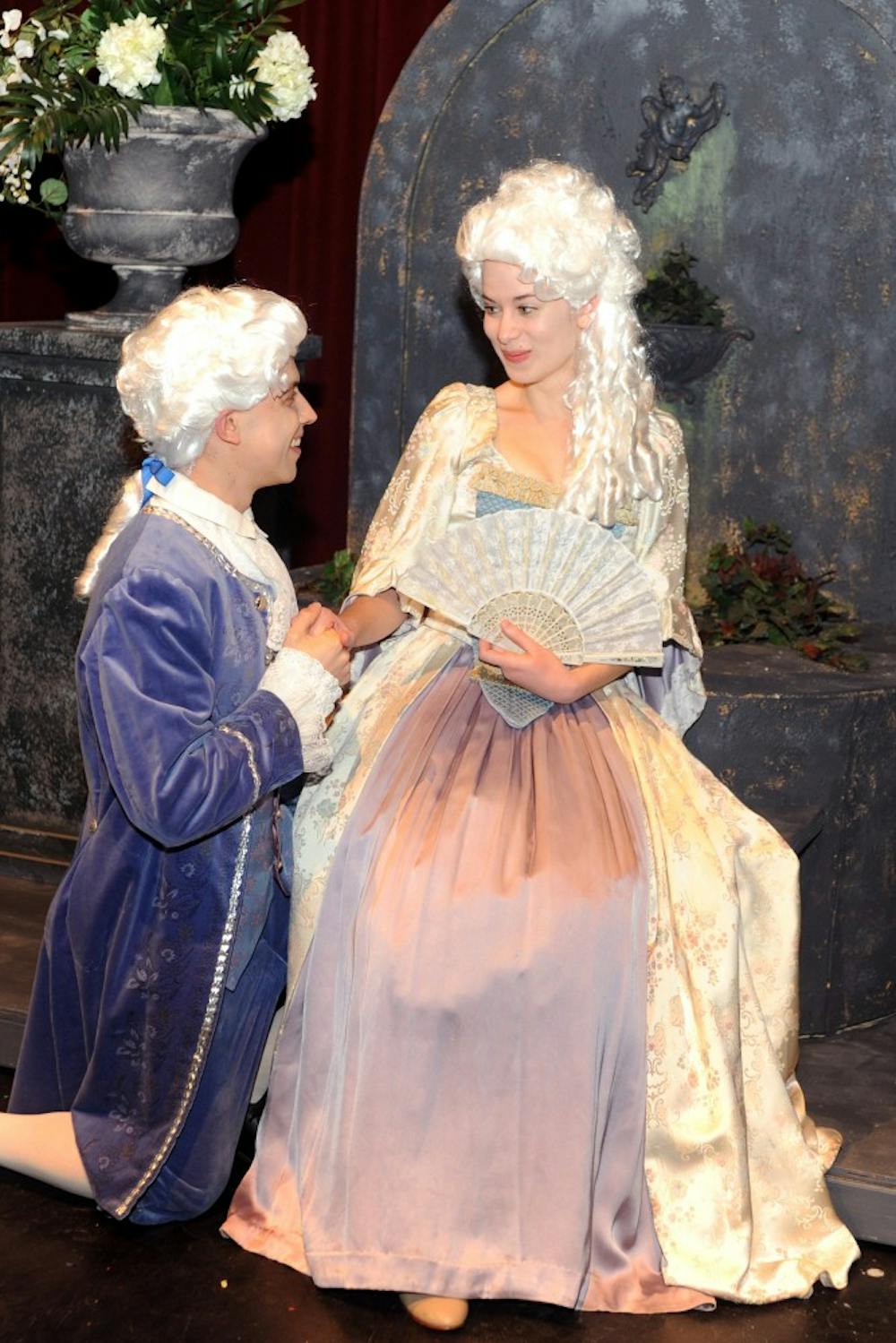Based on the premise of deception, disguise, and seduction, it’s no wonder that the Lyric Opera Theatre’s performance of Le Nozze di Figaro (The Marriage of Figaro) has been so popular. Considered one of the great operatic masterpieces, the ASU production of Pierre Beaumarchais’ work has so far been very well-received. Though ASU has showcased the story before, this is the first time the whole work has been performed in Italian here (with English supertitles).
The Mozart classic focuses on Figaro, Count Almaviva’s valet, who is engaged to Susanna. When the Count takes notice of Susanna, the lecherous noble wishes to re-establish “le droit de seigneur” so that he can consummate Figaro and Susanna’s marriage. However, Figaro, Susanna, and the Countess devise a plan to outwit the skirt-chasing count and expose his scheming.
In order to find out more about the production, I got in touch with the director, Dale Dreyfoos and asked him why he chose to produce Le Nozze di Figaro. He’s had an almost lifelong interest and passion with the performance, and he explained “Ever since I was a child performer [as a soprano soloist with the Atlanta Boy Choir and Atlanta Symphony Orchestra], Mozart has always been and still remains my favorite composer. I first saw Figaro when I was in the 8th or 9th grade at a performance by the Metropolitan Opera…I remember loving the music, but found the story to be amazingly complex.”
He again had the opportunity to see the opera performed by the Vienna State Opera, which featured his favorite singer, Lucia Popp, and he said, “This opera and her performance in particular stands out as one of the most magical performances I've ever attended. I was then lucky enough to hear Figaro twice more in Munich with equally magical results both times.”
With such a passion for the music and the story, it’s clear why Dreyfoos’ production has been so successful. Even though there are numerous difficulties and complexities in producing Le Nozze di Figaro (four different sets, almost 100 costumes for the 11 double cast principals and chorus, a full orchestra), Dreyfoos feels fortunate to have had the chance to work on this piece again.
When I told Dreyfoos that I imagined the Italian must have been a challenge for the student performers, he agreed. Since he’s been listening to opera for so long, the language wasn’t difficult for him to work with, but some of the students had a hard time with the recitative. The extended dialogue sections set to music require not only excellent pronunciation and correct text inflection, but also an understanding of both the literal and subtext meanings. In order to prepare for their roles, the performers dedicated a significant amount of time to translation, study, and practice to make it seem natural.
I asked Dreyfoos what cultural insights the opera offers, and he answered that while the story takes place in the 18th century, modern audiences will see many similarities to themes in present day entertainment as the story covers a range of social issues, including marital infidelity, legal disputes, and blackmail. Dreyfoos clarified that, though “some of the themes are serious, the opera is, at heart, a comedy, and has many moments of humor that are just as funny today as they were back in 1786 when the opera premiered.”
If you missed the performances of Le Nozze di Figaro before Thanksgiving, the final two will be on Dec. 2 and Dec. 3 starting at 7:30 p.m. at the Evelyn Smith Music Theatre on the Tempe campus.
If you have any suggestions for what I should check out next, email me at Mary.G.Richardson@asu.edu or follow me on Twitter at @MG_Richardson.





